
This website supports three options for navigating through the comic: horizontal scrollbar, left and right keyboard arrows, and dragging the comic.
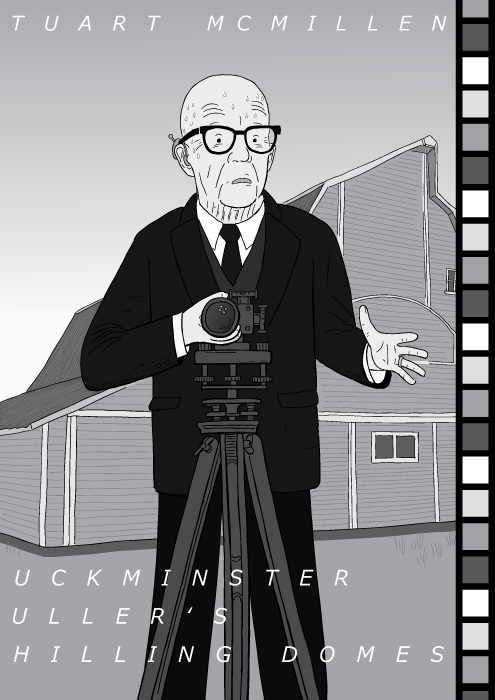
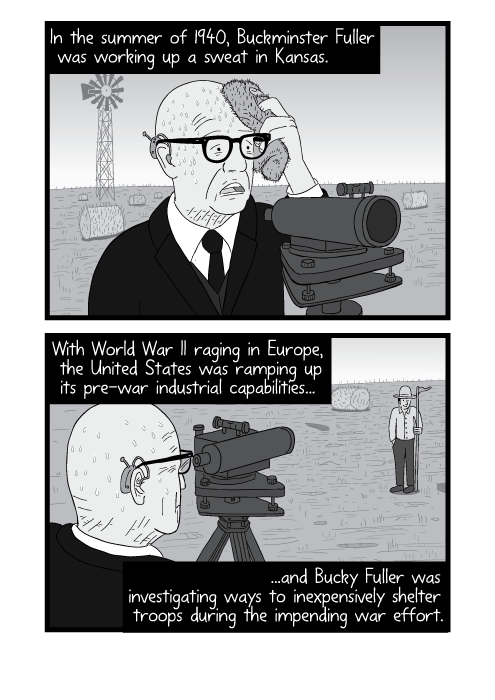
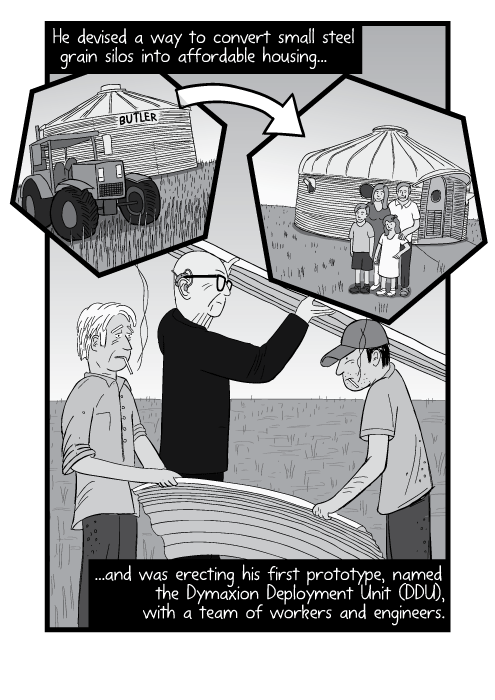
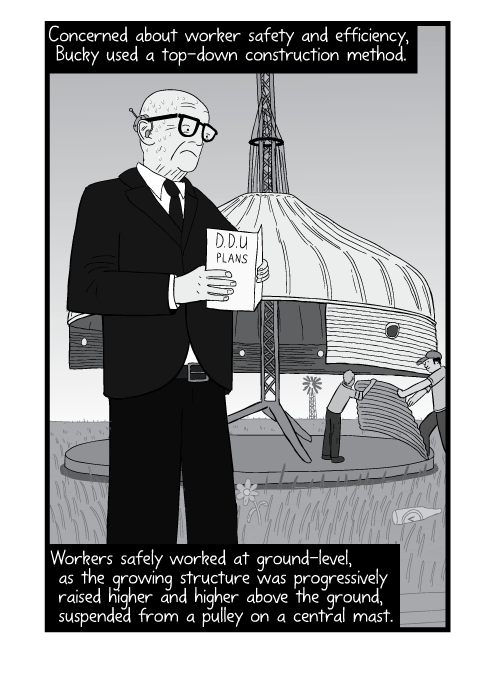
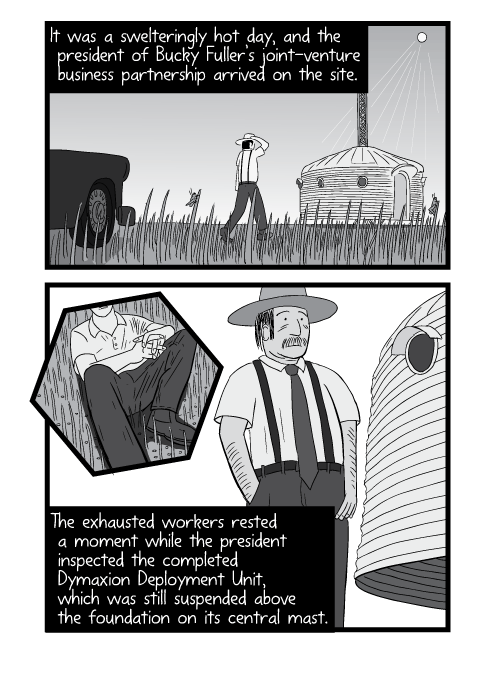
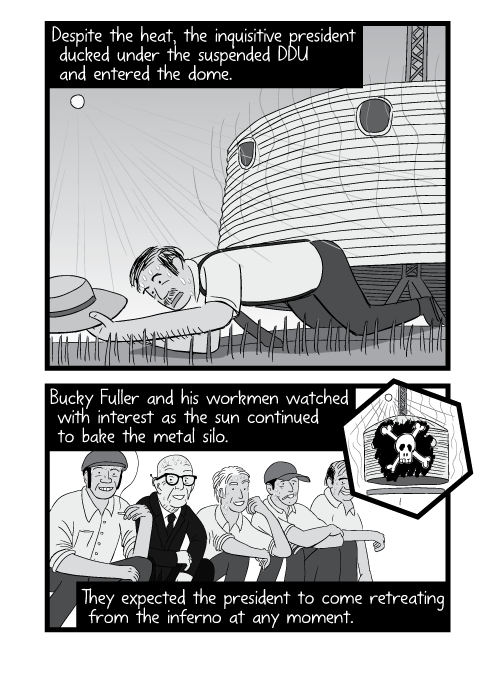
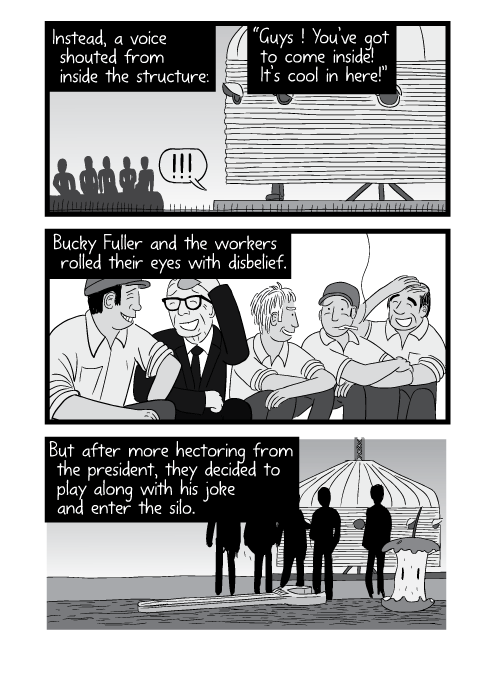
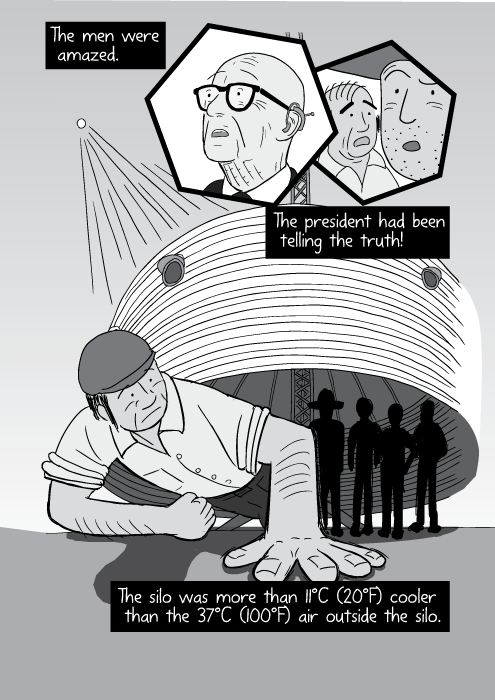
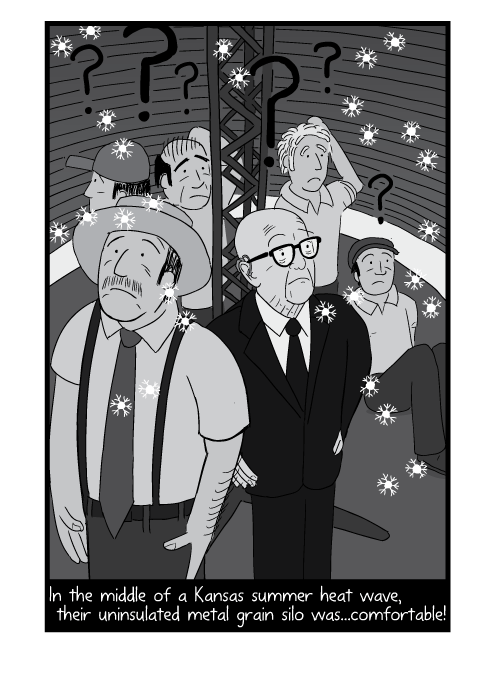
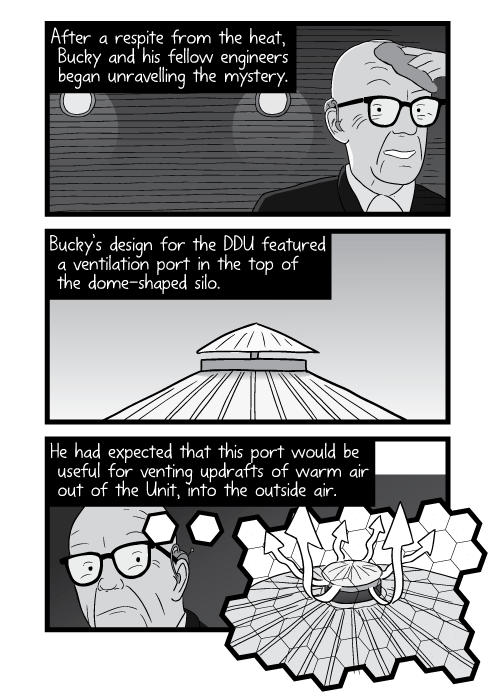
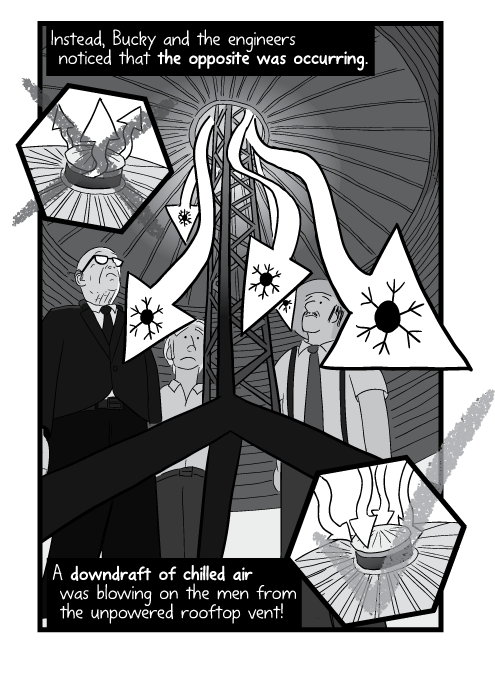
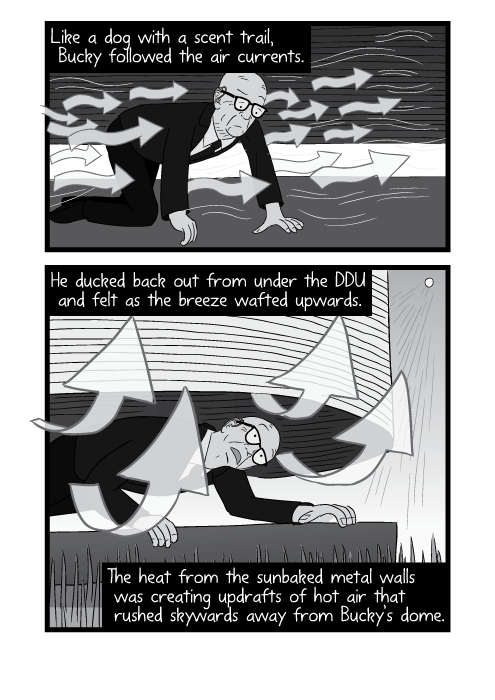
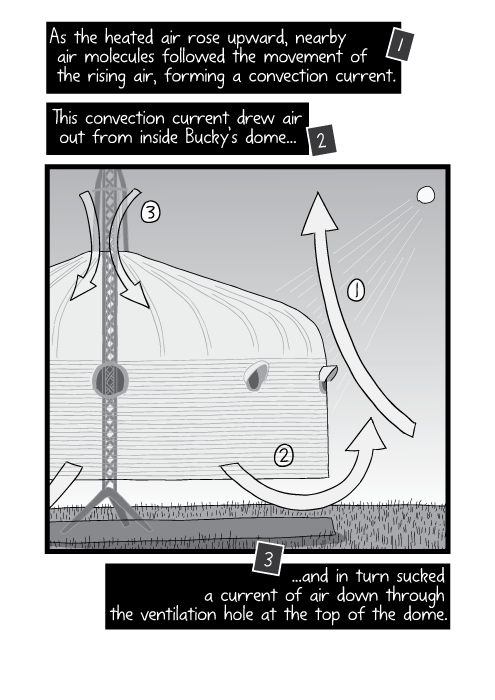
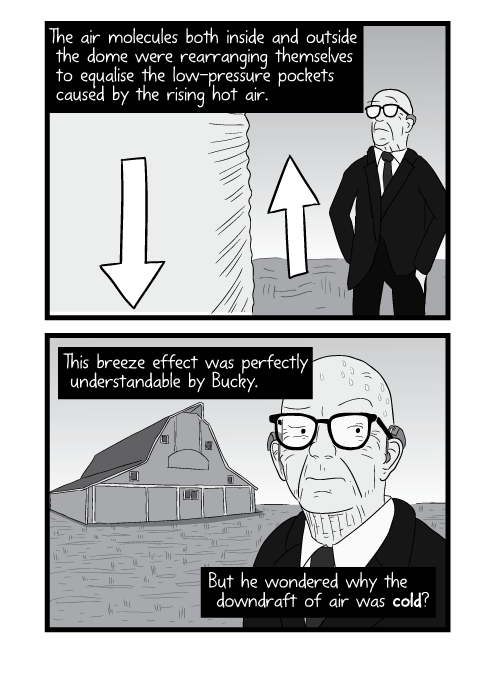
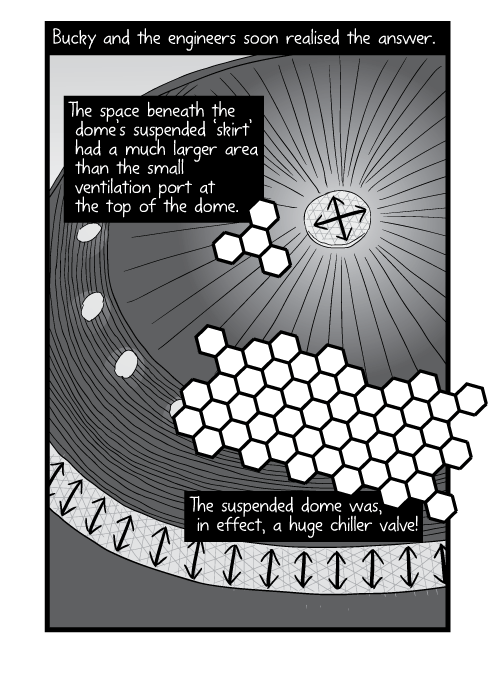
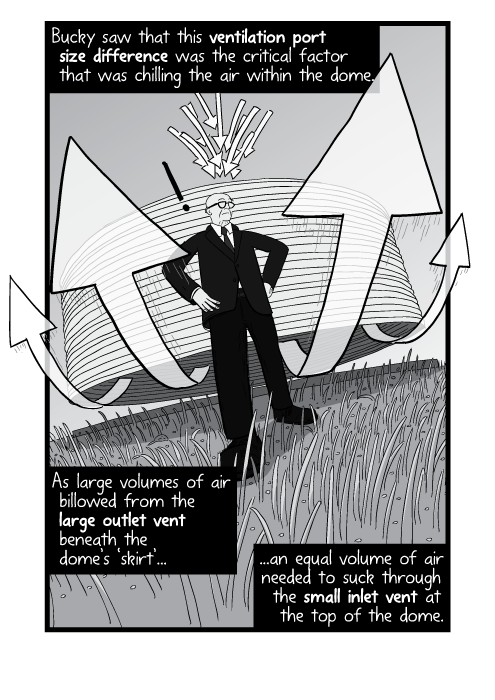
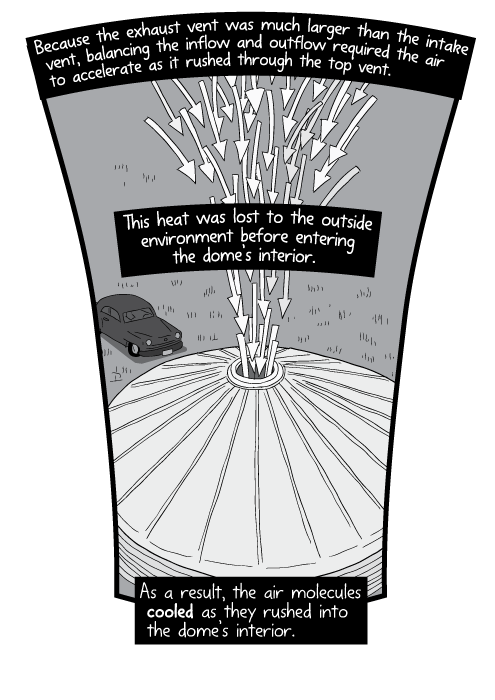
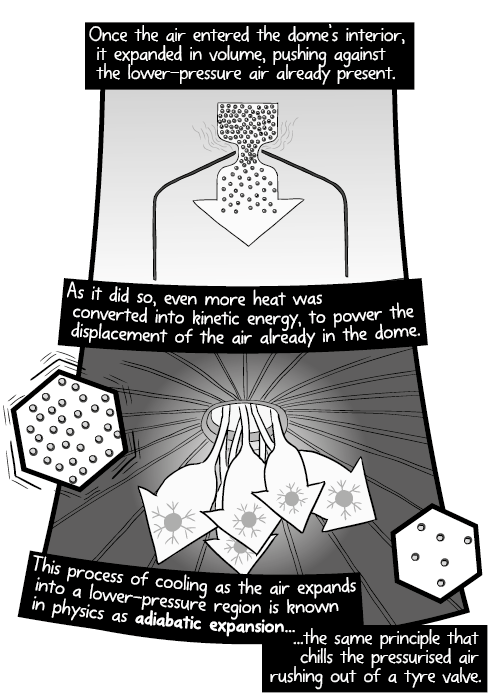
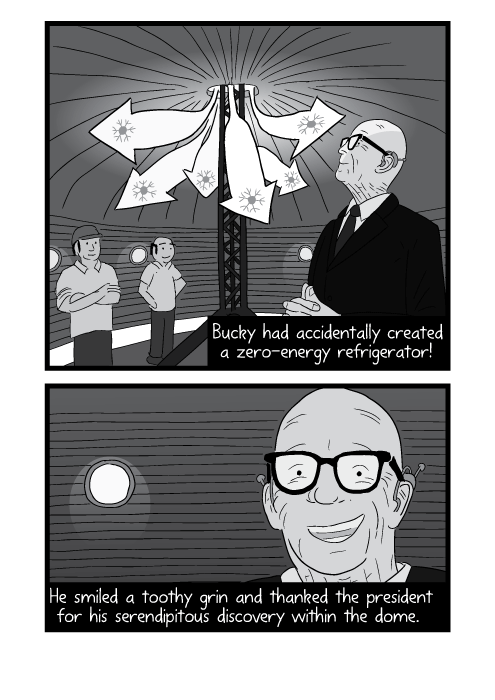
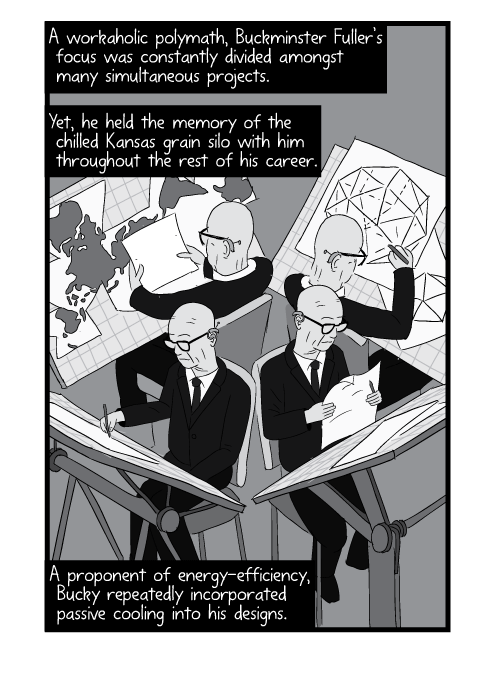
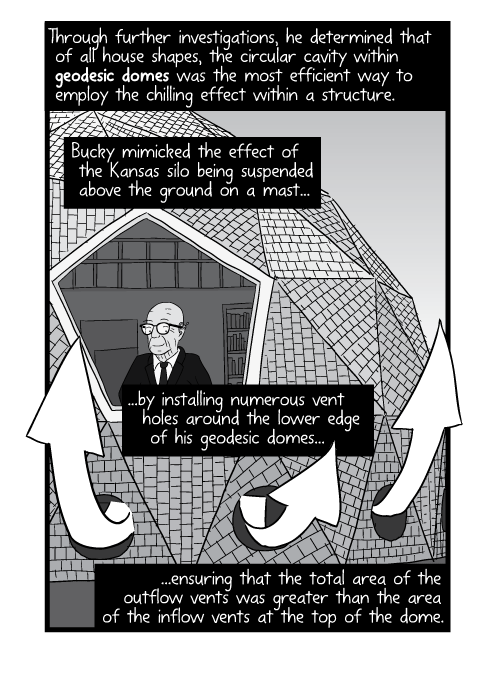
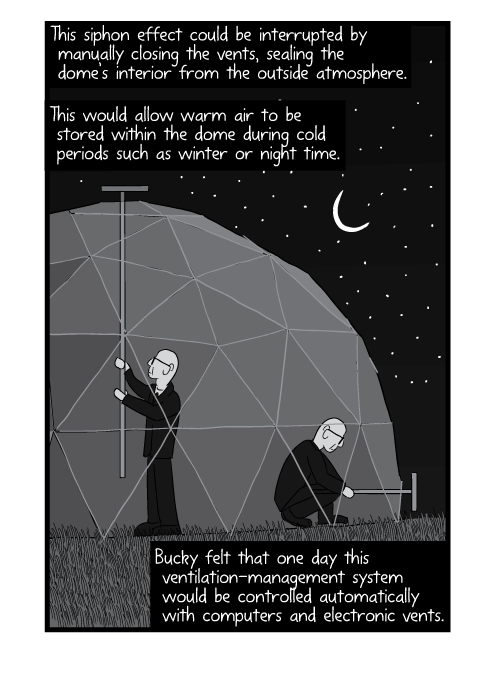
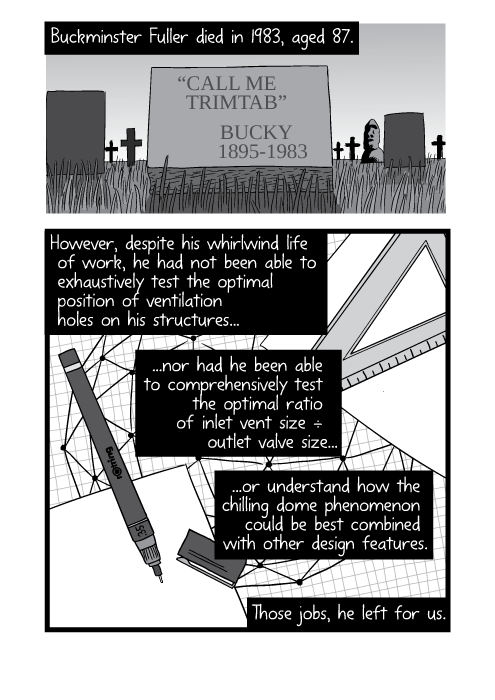
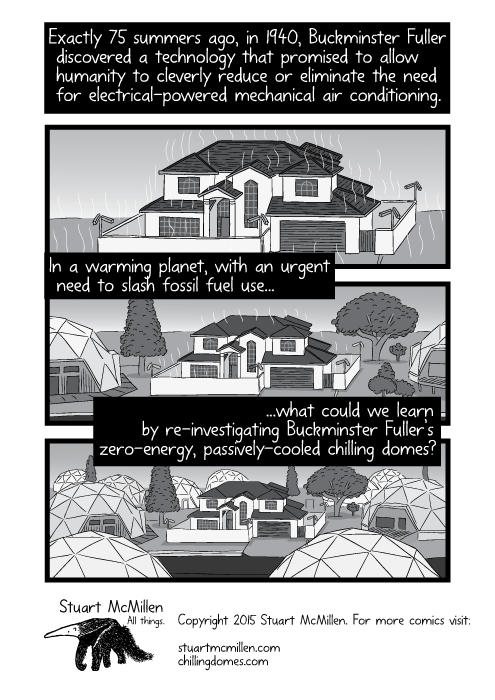
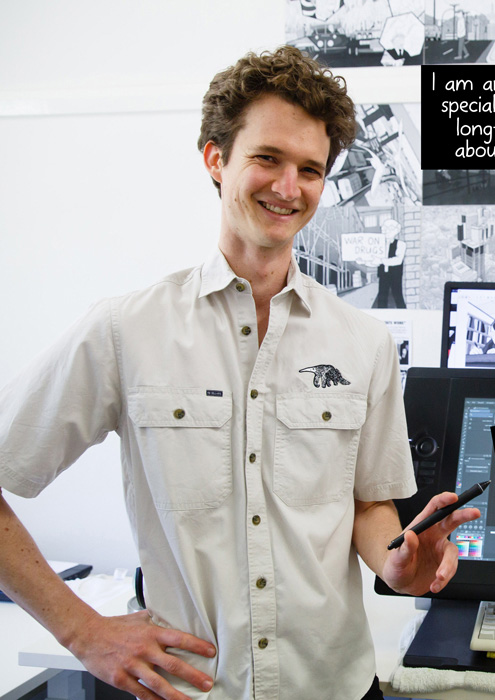


• This remains a relatively-unknown phenomenon that is poorly understood by architects, builders and home occupants.
• I discuss the “evidence for”, and the “evidence against” the physics of this chilling dome phenomenon in a blog post about Buckminster Fuller’s Chilling Domes.
• My primary references are the books Buckminster Fuller’s Universe by L. Steven Sieden (1989; pp208-9), BuckyWorks by J. Baldwin (1996; p36 & pp114-17) and Critical Path by R. Buckminster Fuller (1982; p211). Also, Buckminster Fuller’s Everything I Know lecture 10 (30 January 1975).
• Thanks to Chris Weekes for his help evaluating and explaining the physics behind the “chilling dome” effect.


I discuss the physics behind my comic about Buckminster Fuller's Chilling Domes. Is the phenomenon real? I outline the evidence for and against.

How many invisible "energy slave" workers does it take to fuel our modern lifestyles? A comic about Buckminster Fuller and fossil fuels.

Roughly half of the world’s entire oil supply is gone; half is left. How will our society choose to use the oil that remains? Comic about M. King Hubbert and his 'peak oil' theory of fossil fuel depletion.
Comments
Chris Dollman
Fuller and Tesla were genius. They just needed a company to develop and implement their ideas & inventions. I have done that kind of support work for NASA and DOE scientists. See how MIT Media lab and other institutions have "spun off" production of their discoveries.
Paul Whitby
Great art and very clear communication.
Kristofer
I forgot to say that I also loved the story! :) Thanks, very interesting!
Kristofer
I love the futuristic look of the geodesic dome homes, likewise do I find passive cooling systems unreasonably fascinating. However, I must point out one thing you have got wrong: When air is accelerated because it is forced to flow through a narrow passage, it is not compressed and heated up, but the air pressure temporarily *decreases* and the air is actually *chilled down* as it enters the passage (and heated up again when it leaves it). This is because of something known as Bernoulli's principle.
Liam
Enjoyed this format! Thx!
Nick Helweg-Larsen
Hi, Great to see this, amazing job, thanks. I struggle deciphering his books and lectures. Nick =)
Michael Adams
Far south coast New South Wales. Want to see more.
Federico Camilo
I am an architect/designer working on CNC built Hempcrete structures, I think domes are awesome and the time has come to incorporate them into the architectural solutions needed for climate change. Great job presenting the work of Mr Fuller. A man who is the unsung hero of the 2oth century!
Matthew Fresolone
This was great! Really, fascinating and charming! Also. I found the newsletter button....
Matthew Fresolone
This was great! I look forward to more of your comics! Is there a mailing list or some sort of subscription service to alert me when you make another?
Johnny Hickman
I've heard of this before. It works.
Zero energy, passively cooled chilling domes | storySpace
[…] love Stuart McMillen’s comics, here’s one about a 1940s innovation. a cool chilling dome, sounds like a good place to […]
William
Truly excellent. THanks you
Raahul
I've been a big bucky dome fan for a long time. Domeshells offer that here in Queensland as an option so you can live the Geodesic dream Stuart.http://www.domeshells.com.au/
Stuart Morris
Great comic, thanks. I've been trying to get going on a documentary comic myself, have done some in the past, and I know the effort involved. I'm envious of your skill and output.